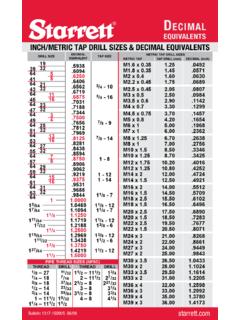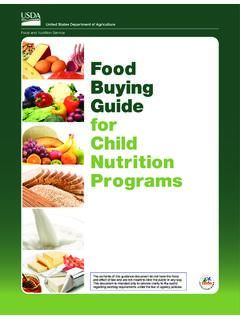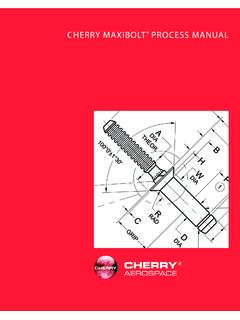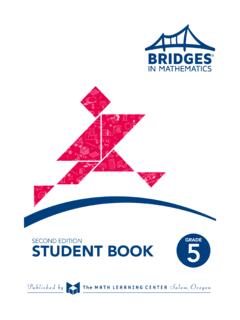Transcription of Unit Field Sanitation Teams - United States Army
1 ATP unit Field Sanitation Teams APRIL 2014 DISTRIBUTION RESTRICTION: Approved for public release; distribution is unlimited. Headquarters, Department of the army This publication is available at army Knowledge Online ( ). To receive publishing updates, please subscribe at *ATP Distribution Restriction: Approved for public release; distribution is unlimited. *This publication supersedes FM (FM 21-10-1) dated 25 January 2002. 30 April 2014 ATP i army Techniques Publication No. Headquarters Department of the army Washington, DC, 30 April 2014 unit Field Sanitation Teams Contents Page vi INTRODUCTION.
2 Vii Chapter 1 unit Field Sanitation Teams .. 1-1 History .. 1-1 Contemporary Operations .. 1-1 Importance of the unit Field Sanitation Teams .. 1-1 Chapter 2 HEALTH THREATS TO SOLDIERS IN THE Field .. 2-1 Health Threats .. 2-1 Preventive Medicine Measures .. 2-1 Section I Soldier Responsibilities .. 2-2 Individual Soldiers .. 2-2 Section II Commanders and unit Leaders Responsibilities .. 2-10 Commanders and Leaders .. 2-10 Chapter 3 unit WATER SUPPLY .. 3-1 Section I Maintaining unit Water Supply .. 3-1 Importance of Water .. 3-1 Section II Sources of Water in the Field .. 3-3 Sources of Water .. 3-3 Approved Uses of Potable and Nonpotable Water .. 3-4 Section III Waterborne Pathogens .. 3-6 Commonly Encountered Waterborne Pathogens .. 3-6 Bacterial Infections .. 3-6 Protozoan Infections .. 3-9 Viral Infection .. 3-10 Section IV Approved Field Water Disinfectants .. 3-11 Water Disinfectants Used at unit -Level .. 3-11 Calcium Hypochlorite.
3 3-11 Effectiveness of Chlorine Disinfection .. 3-11 Determining Chlorine Residual .. 3-12 Contents ii ATP 30 April 2014 Rechlorinating unit Bulk Water Supplies .. 3-13 Section V Water Storage Systems .. 3-18 Bulk Water Storage Systems .. 3-18 Individual Water Storage Systems .. 3-18 Section VI Approved Water Purification Procedures .. 3-19 Calcium Hypochlorite to Disinfect Bulk Water Supplies .. 3-19 Using Calcium Hypochlorite to Disinfect Canteens .. 3-19 Using the Chlorination Kit (Water Purification) for Personal Hydration Systems3-19 Using Iodine 3-21 Section VII Inspecting, Cleaning, and Sanitizing Water Storage Equipment .. 3-22 Inspecting Water Storage Equipment .. 3-22 Cleaning and Sanitizing Water Storage Equipment .. 3-22 Chapter 4 FOOD SERVICE Sanitation .. 4-1 Role of the unit Field Sanitation 4-1 Section I Foodborne Pathogens .. 4-1 Most Common Foodborne Pathogens .. 4-1 Importance of Sanitary Practices in Food Handling .. 4-3 Transporting Meals.
4 4-4 Section II Hygiene Standards for Food Handlers .. 4-6 Food Service Personnel and Detailed Servers .. 4-6 Section III Pest Control .. 4-7 Insects .. 4-7 Rodents .. 4-7 Chapter 5 WASTE MANAGEMENT .. 5-1 Importance of Waste Management .. 5-1 Role of the unit Field Sanitation 5-1 Classification of Waste Materials .. 5-1 Management and Disposal of Waste Materials .. 5-1 Disposal Methods for Nonhazardous Solid Waste .. 5-2 Wastewater .. 5-5 Disposal Methods for Gray Water .. 5-5 Disposal Methods for Black Water .. 5-10 Latrines .. 5-12 Urine Disposal Facilities .. 5-20 Chapter 6 PEST MANAGEMENT .. 6-1 General .. 6-1 Section I Mammals .. 6-1 Rodents .. 6-1 Commonly Encountered Rodents .. 6-7 Control Techniques for Rodents .. 6-12 Feral Animals .. 6-13 Rabies .. 6-14 Section II Arthropods .. 6-15 Arthropods of Military Significance .. 6-15 Management of Arthropods .. 6-20 Contents 30 April 2014 ATP iii Management Through Individual Preventive Medicine Measures .. 6-22 Proper Wear of the 6-24 Chapter 7 HEAT INJURY.
5 7-1 Heat Injury .. 7-1 Section I Basics of Heat Injury Risk .. 7-1 Threat .. 7-1 Defense .. 7-1 Acclimatization .. 7-2 Risk Factors .. 7-2 Section II Types of Heat Injury and Heat-Related Conditions .. 7-2 Heat Cramps .. 7-2 Heat Exhaustion .. 7-3 Heat Stroke .. 7-3 Heat Rash .. 7-3 Sunburn .. 7-3 Skin Cancer .. 7-4 Rhabdomyolysis .. 7-4 Hyponatremia .. 7-4 Section III Prevention Strategies .. 7-4 Acclimatization .. 7-4 Section IV Heat Injury Prevention Tools .. 7-6 Training and Education .. 7-6 Heat Injury Controls .. 7-8 Wet Bulb-Globe Temperature Index .. 7-9 Additional Resources .. 7-10 Chapter 8 COLD INJURY .. 8-1 Cold Injuries .. 8-1 Section I Basics of Cold Injury Risk .. 8-1 Cold Injury Factors .. 8-1 Section II Cold and Wet (Nonfreezing) Cold Injuries .. 8-4 Cold and Wet Injuries .. 8-4 Hypothermia .. 8-4 Chilblains .. 8-5 Immersion Syndrome (Trench Foot) .. 8-6 Section III Cold and Dry (Freezing) Injuries .. 8-6 Cold and Dry Injury .. 8-6 Frostbite.
6 8-7 Degrees of Frostbite .. 8-7 Section IV Other Conditions Associated With Cold Weather .. 8-8 Dehydration .. 8-8 Carbon Monoxide Poisoning .. 8-9 Snow Blindness .. 8-9 Section V Cold Injury Prevention Tools .. 8-10 General Guidance for All Cold-Weather Training .. 8-10 Chapter 9 TOXIC INDUSTRIAL MATERIAL HAZARDS .. 9-1 Contents iv ATP 30 April 2014 Toxic Industrial Materials .. 9-1 Potential Health Effects .. 9-1 Toxic Industrial Material Classifications .. 9-1 Routes of Entry .. 9-2 Chemical Actions and Effects .. 9-3 Commonly Encountered Toxic Gases and Liquids .. 9-3 Prevention and Control .. 9-6 Reporting Toxic Industrial Material Exposure .. 9-7 Chapter 10 NOISE HAZARDS .. 10-1 Noise .. 10-1 Factors Determining the Degree of Hazard .. 10-1 Types of Noise .. 10-1 Hearing Loss Preventive Medicine Measures .. 10-3 Earplugs .. 10-4 Earmuffs .. 10-6 Tactical Communication and Protection Systems .. 10-7 GLOSSARY.
7 Glossary-1 REFERENCES .. References-1 INDEX .. Index-1 Figures Figure 5-1. Improvised barrel incinerator .. 5-3 Figure 5-2. Garbage burial pit .. 5-4 Figure 5-3. Standard soakage pit .. 5-6 Figure 5-4. Soakage trench with barrel filter grease trap .. 5-7 Figure 5-5. Baffle grease trap .. 5-8 Figure 5-6. Barrel filter grease trap .. 5-8 Figure 5-7. Evaporation bed .. 5-9 Figure 5-8. Three-tier evaporation beds .. 5-9 Figure 5-9. Field wash stand .. 5-11 Figure 5-10. Improvised handwashing facility .. 5-12 Figure 5-11. Portable latrine systems .. 5-13 Figure 5-12. Chemical latrines .. 5-13 Figure 5-13. Containerized latrine 5-14 Figure 5-14. Cat-hole latrine .. 5-14 Figure 5-15. Straddle trench latrine .. 5-15 Figure 5-16. Mound latrine .. 5-15 Figure 5-17. Deep pit latrine .. 5-16 Figure 5-18. Bored-hole latrine.
8 5-16 Figure 5-19. Properly closed latrines .. 5-17 Figure 5-20. Pail latrine .. 5-18 Figure 5-21. Single seat open-air burn-out latrine .. 5-18 Contents 30 April 2014 ATP v Figure 5-22. Multiple seat enclosed burn-out latrine .. 5-19 Figure 5-23. Proper method for igniting fuel in a burn-out latrine .. 5-20 Figure 5-24. Urine soakage pit with pipe urinals .. 5-21 Figure 5-25. Trough urinal .. 5-22 Figure 5-26. Urinoil .. 5-22 Figure 6-1. Norway rat, Rattus norvegicus .. 6-7 Figure 6-2. Roof rat, Rattus rattus .. 6-9 Figure 6-3. House mouse, Mus musculus .. 6-10 Figure 10-1. Triple-flange earplug .. 10-4 Figure 10-2. Quad-flange earplug .. 10-5 Figure 10-3. Nonlinear double- and single-ended earplugs .. 10-5 Figure 10-4. Foam, hand-formed earplug .. 10-6 Figure 10-5. Earplug carrying case .. 10-6 Figure 10-6. Type II earmuffs .. 10-7 Tables Table 1-1. Disease and nonbattle injury rates in contemporary operations .. 1-1 Table 3-1. Approved potable and nonpotable water uses.
9 3-5 Table 3-2. Recommended Field water chlorine residuals .. 3-14 Table 3-3. Chlorine dose calculator using five percent liquid (household) bleach .. 3-15 Table 3-4. Chlorine dose calculator using 70 percent high-test hypochlorite or solution concentrate .. 3-16 Table 3-5. Equivalent volumes chart .. 3-17 Table 3-6. Common fractions and their decimal equivalents .. 3-17 Table 3-7. Instructions for using the chlorination kit (water purification) .. 3-20 Table 3-8. Chlorination kit (water purification) tablet or powder sachet addition instructions .. 3-21 Table 6-1. Diseases associated with rodents .. 6-2 Table 6-2. Arthropods of military importance and the major diseases they transmit .. 6-16 Table 7-1. Benefits of heat acclimatization .. 7-5 Table 7-2. Examples of work and their classification .. 7-6 Table 7-3. Heat acclimatization recommendations for Soldiers .. 7-7 Table 7-4. Work/rest and water consumption guide .. 7-8 Table 8-1. Windchill chart .. 8-11 Table 8-2.
10 Wet windchill chart .. 8-12 Table 8-3. Preventive measures to reduce the risk of frostbite .. 8-13 Table 10-1. Examples of steady noise .. 10-2 Table 10-2. Examples of impulse noise .. 10-2 Table 10-3. Triple-flange earplug, color, size, and distribution information .. 10-5 vi ATP 30 April 2014 Preface This army Techniques Publication (ATP) provides guidance for establishing, training, and employing unit Field Sanitation Teams . Implementation of the techniques presented in this publication will enable commanders to maintain a fit and healthy force capable of accomplishing the mission in any environment. The principal audience for ATP is all commanders, leaders, unit Field Sanitation Teams , individual Soldiers, Department of the army civilians, and military contractors. Commanders, staffs, and subordinates ensure their decisions and actions comply with applicable United States , international, and, in some cases, host-nation laws and regulations.














